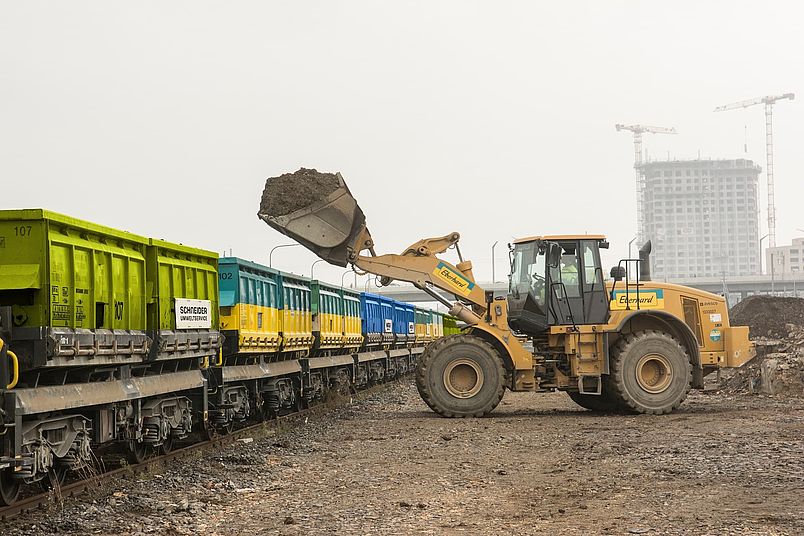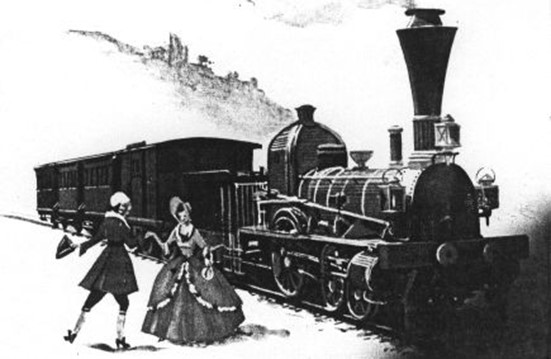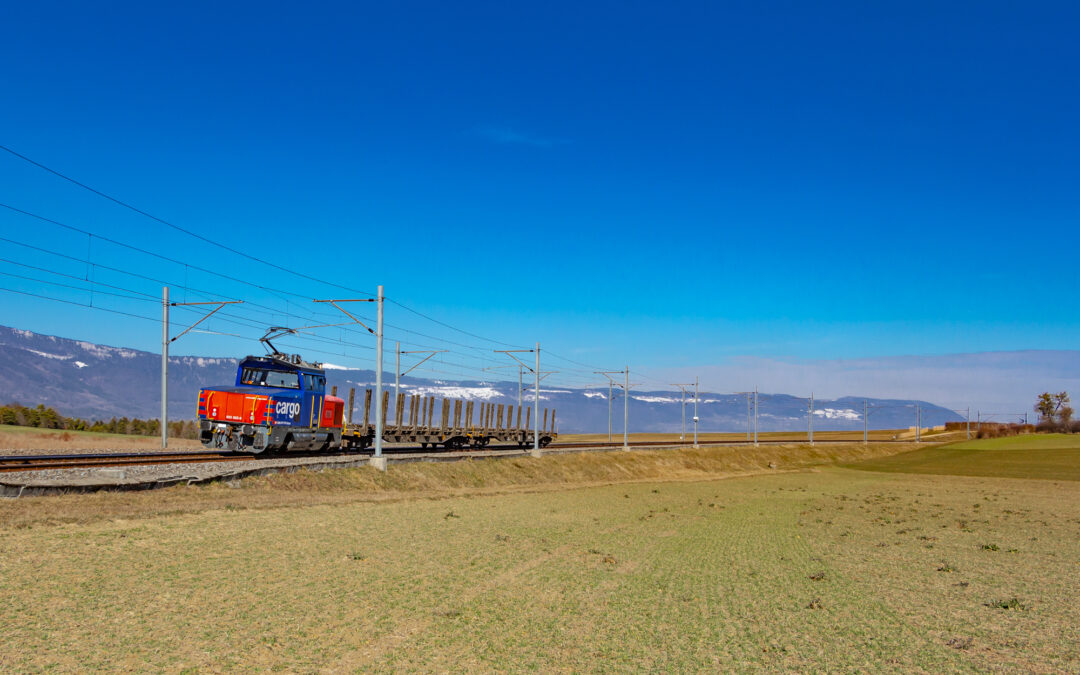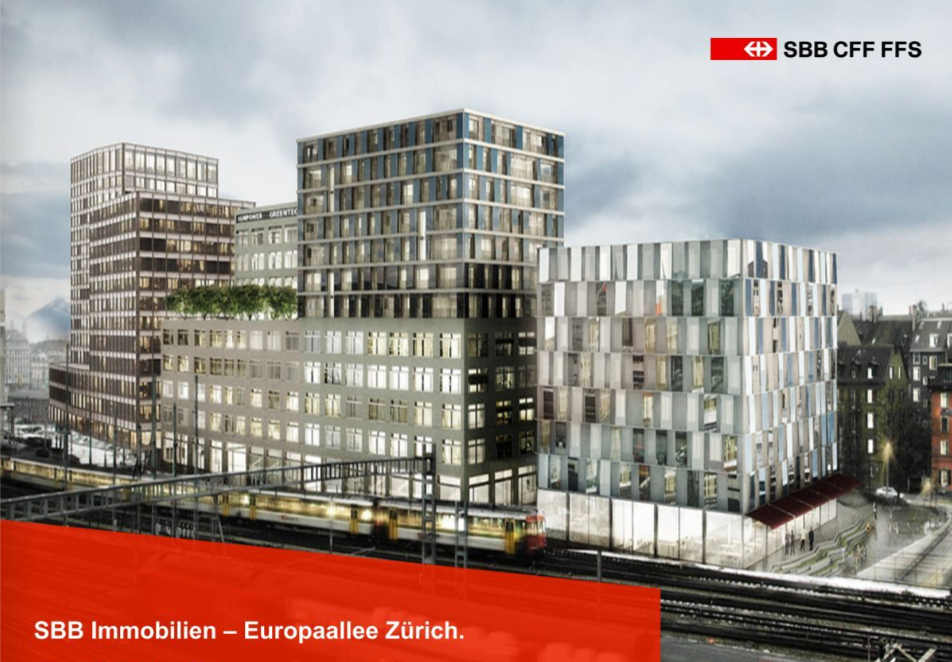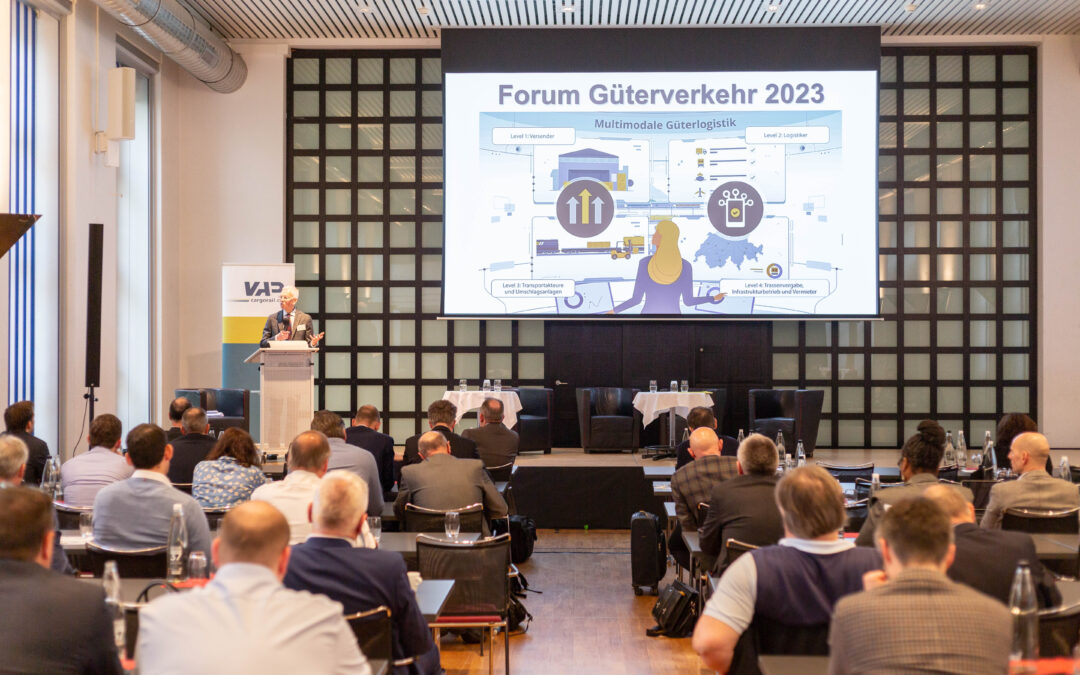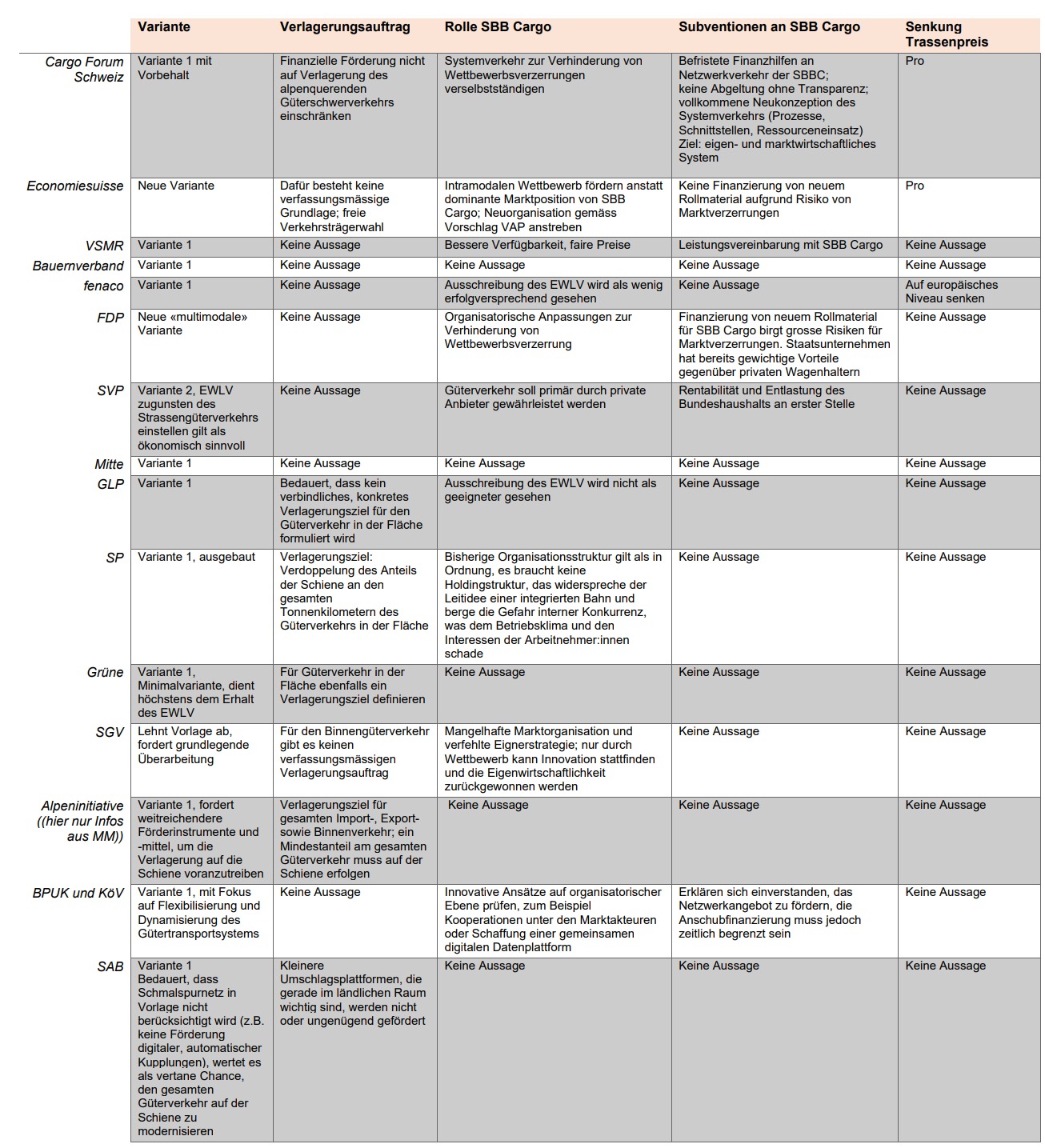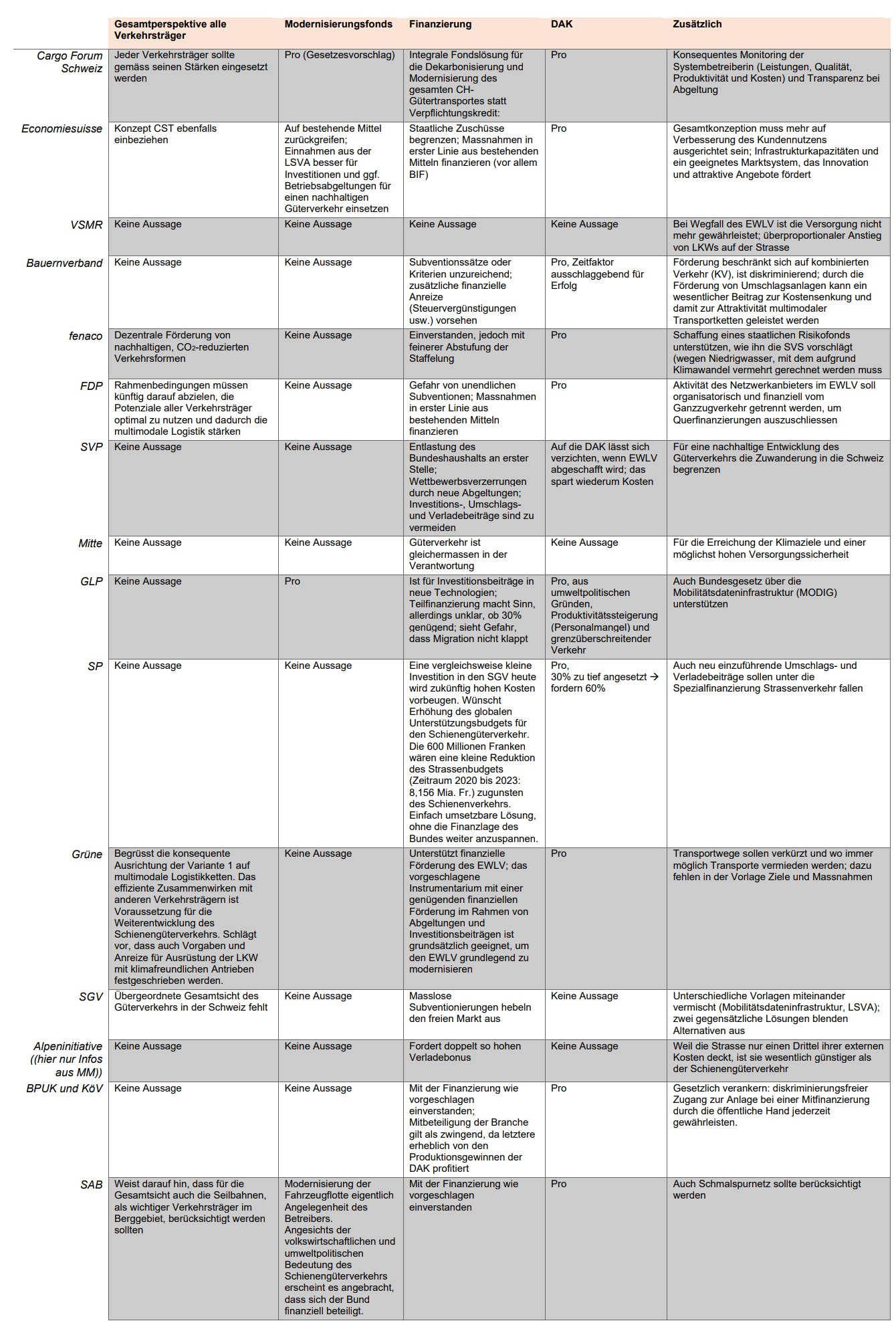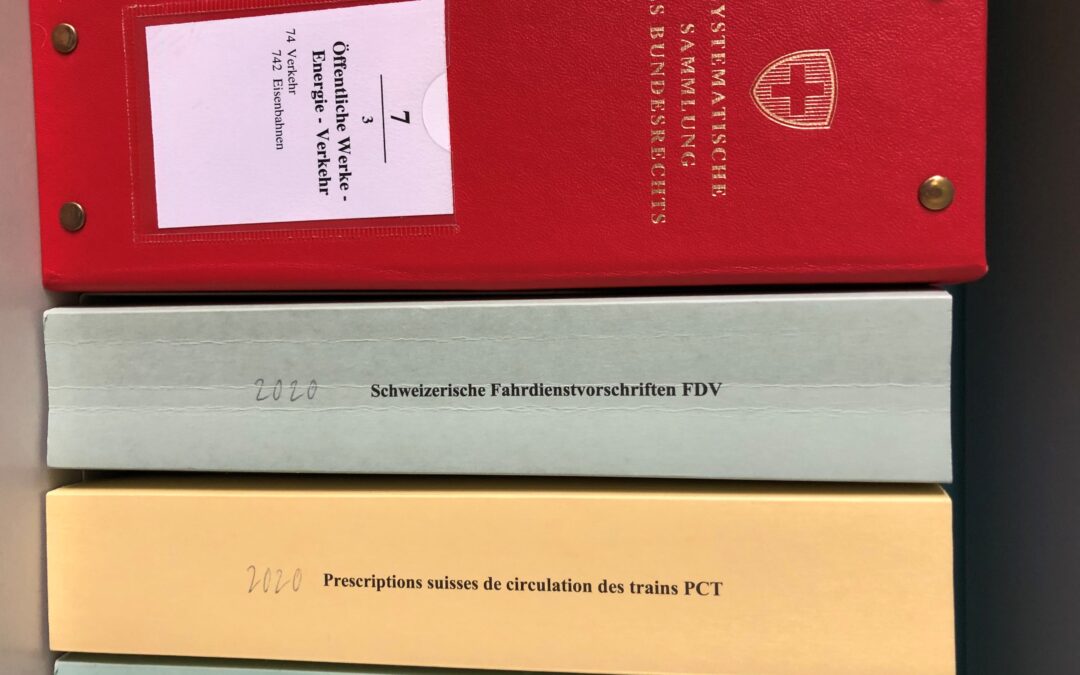[et_pb_section fb_built="1" _builder_version="4.16" global_colors_info="{}"][et_pb_row _builder_version="4.16" background_size="initial" background_position="top_left" background_repeat="repeat" global_colors_info="{}"][et_pb_column type="4_4" _builder_version="4.16" custom_padding="|||" global_colors_info="{}" custom_padding__hover="|||"][et_pb_text _builder_version="4.24.2" background_size="initial" background_position="top_left" background_repeat="repeat" hover_enabled="0" global_colors_info="{}" sticky_enabled="0"]
The Freight Transport Forum, which took place on 20 April 2023, addressed the future of logistics, multimodality and, in particular, the steps needed to modernise Swiss freight transport in a digital and dynamic world. Top-class speakers informed the audience about the latest research results, developments and challenges in practice as well as new legal framework conditions.
The three introductory speeches by representatives of the business community, Sara Udavri (IKEA Supply AG), Titus Bütler (Swiss Post) and Rainer Deutschmann (Migros-Genossenschafts-Bund) clearly demonstrated the business community's commitment to sustainable logistics. One lever for this is the shift of transports into multimodal logistics chains, in which energy- and space-efficient modes of transport such as shipping and rail should also play a leading role. This is difficult in a dynamic world with traditionally less flexible partners and limited infrastructure capacities and involves considerable supply risks. However, based on the findings of research, presented by Dr. Matthias Prandtstetter (AIT Austrian Institute of Technology) for the provision and use of data and artificial intelligence, solutions are emerging to be able to organise increasingly dynamic and resilient transport chains. The data exchange structures that are necessary for this are already active in the field of CT, as exemplified by the DX I hub presented by Christoph Büchner (DX International) with government support from Germany, or are in the process of being created due to the new legal basis in Switzerland, presented by Monika Zosso (Federal Office of Transport BAV). Dr. Peter Füglistaler (Federal Office of Transport FOT) outlined how Switzerland intends to integrate the rail freight transport system into multimodal logistics and transfer it to the digital world of tomorrow.
In Europe, a negative development can be observed despite EEC Directive 91/440: Declining modal split and high subsidies for state railways, little customer orientation and innovation, as in many places in Europe competitors in rail freight transport still play a subordinate role. A fundamental restructuring of the rail system is therefore inevitable in order to find a way out of the subsidy trap. In doing so, the system must be made sustainable and risk-optimised through the implementation of automation and digitalisation by means of the DAK as the first step without alternative. However, this must be followed by the further development of the system, especially in wagonload traffic, in order to reduce the risk of failure for the customers and the owners of the state railways operationally and financially and to promote customer orientation and innovation. One possible solution is to split the system into a network provider of several players with a system integrator and a neutral last mile provider outside the transport market (see blog article «Outsourcing the last mile and making it non-discriminatory»).
[/et_pb_text][et_pb_gallery _builder_version="4.24.2" _module_preset="default" gallery_ids="13246,13245,13244,13243,13242,13241,13240,13239,13238,13237,13236,13235,13234,13233,13232,13231,13230,13229,13228,13227,13226,13225,13224,13223,13222,13221,13220,13219,13218,13217,13216,13215,13214,13213,13212,13211,13210,13209,13208,13207,13206,13205,13204,13203,13202,13201,13200,13199,13198,13197,13196,13195,13194,13193,13192,13191,13190,13189,13188,13187,13186,13185,13184,13183,13182,13181,13180,13179,13178,13177,13176,13175,13174,13173,13172,13171,13170,13169,13168,13167,13166,13165,13164,13163,13162,13161,13160,13159,13158,13156,13155,13154,13153,13152,13151,13150,13149,13148" fullwidth="on" hover_enabled="0" sticky_enabled="0"][/et_pb_gallery][et_pb_divider _builder_version="4.24.2" _module_preset="default" hover_enabled="0" sticky_enabled="0" show_divider="off"][/et_pb_divider][et_pb_divider _builder_version="4.24.2" _module_preset="default" hover_enabled="0" sticky_enabled="0"][/et_pb_divider][et_pb_text _builder_version="4.24.2" background_size="initial" background_position="top_left" background_repeat="repeat" hover_enabled="0" global_colors_info="{}" sticky_enabled="0"]
Review of the Freight Transport Forum: The most important points in detail
MULTIMODALITY - MODERNISING SWISS FREIGHT TRANSPORT
Against the backdrop of the current debate on the financing of rail freight transport by the federal government, the Freight Transport Forum dealt with the challenges of multimodality in logistics.
Welcome
In his welcome address, Frank Furrer pointed out the thread running through the VAP's forums, from safety in the area of conflict between costs and quality and new forms of cooperation in wagonload traffic in 2019, through politics in the green rush and the actual innovation potential of automation and digitalisation in 2022, to the current forum, which deals with the future of logistics and multimodality. The fundamental renewal of the rail system and the harmonious and powerful interplay of all modes of transport are necessary to make optimal use of the available capacities of the various infrastructures, to ensure a secure supply of Switzerland and also to create a place for rail in logistics. All this is in the interest of Switzerland as a place to live and do business. Since EU Directive 91/440, i.e. well over thirty years ago, the states in Europe have been trying to lead their own railway companies to success. Despite large subsidy programmes in UCT, a declining share of rail freight transport in the modal split can be observed and rapidly increasing subsidies to the state railways are necessary. There is no alternative to modernising and fundamentally restructuring the system. It will once again cost the states a great deal of money and demand a lot from the industry. What it could look like will be discussed together today.
Multimodality - On the Revision of the Freight Transport Act
Dr. Peter Füglistaler, Director of the Federal Office of Transport, presented the Federal Council's proposal for the revision of the Freight Transport Act. This focuses quite strongly on measures to strengthen multimodality, as there are practically no monomodal transports by rail. A redefinition of the transhipment platforms, which are to enable more multimodality and bundling, especially as city hubs, and their financial and spatial planning support are an essential improvement of the framework conditions. A transhipment bonus is intended to provide incentives to shippers to increasingly combine different modes of transport in their logistics chains. For the director of the Federal Office of Transport, the Digital Automatic Coupling DAK is a key factor for success and less future than urgently needed reality. The state is happy to help on the way to this new reality, but the initiative must come from the economy.
Multimodality - On the needs of business - IKEA
Sara Udvari, Category Manager Logistics at IKEA Supply AG, emphasises the importance of sustainability in the company's supply chain. The vision of creating a better everyday life for people includes responsibility for the environment. As IKEA's products often make a long journey through the supply chain, it is important to find sustainable solutions. To be climate positive by 2030, IKEA focuses on reducing greenhouse gases, improving energy efficiency and supporting suppliers. In transport, the aim is to reduce greenhouse gas emissions by 70%, while in storage the target is to reduce CO2 emissions by 80%. To achieve these goals, IKEA is focusing on three key areas: increasing efficiency, replacing fossil fuels with intermodal solutions and electrification, and rethinking the way products are delivered. IKEA is already committed to intermodal transport and is currently at 46% intermodal solutions globally. Fact-based CO2 calculation is an important part of IKEA's sustainability strategy. Preset calculations only give average values, so fact-based tools should be used to get a realistic calculation of the carbon footprint. IKEA aims to further develop multimodality in order to find even more sustainable solutions. A prerequisite for this is dynamic transport chains and a corresponding organised constant exchange of data. Cooperation with partners who share the same values is central to this.
Multimodality - On the needs of the economy - Migros
Rainer Deutschmann, Head of Safety & Transport, is committed to a sustainable supply chain at Migros. The focus is on multimodal goods logistics that combine different means of transport such as rail, truck, autonomous driving and Cargo Sous Terrain (CST). Together with economiesuisse, VAP, Astag and IG DH, the role that the various means of transport should play in sustainable freight logistics is being worked out. Although Migros is fundamentally opposed to subsidies, a limited subsidy in the area of technology transfer is advocated as long as it does not distort competition and the benefits reach the customer. In order to make goods logistics more sustainable, the focus is on reducing the number of kilometres driven and increasing automation. Good multimodality requires a complete redesign of the railway. CST is in the implementation phase and is already well advanced. Switzerland's largest warehouse in Ebikon also serves as a test site for autonomous driving. For trucks, several drive technologies are still being investigated, such as biogas, electric or H2. In order to select the most efficient means of travel with the most suitable drive, Migros evaluates data from GPS tracks. Rainer Deutschmann's commitment shows that companies can and must live up to their responsibility towards the environment. Cooperation with various partners and the use of new technologies are key success factors.
Multimodality - On the needs of business - Post Office
Titus Bütler shed light on multimodality in Swiss Post's transports and the needs of its customers, who expect fast, reliable and affordable deliveries. Swiss Post strives to meet these needs by ensuring frequent and reliable transport, offering competitive prices and providing important data. There are 45 postal trains daily with a punctuality rate of 94.4%. However, the truck is about 25-40% faster from ramp to ramp compared to the train, even if the truck still has to pile up the goods. This has led to a decline in the rail share. Nevertheless, Swiss Post continues to rely on rail and is therefore trying to build infrastructure to speed up rail transport, such as letter centres with ramp tracks and its own rail terminals (kV) at the three large parcel centres. Since Swiss Post has to fulfil a basic service mandate, the acceleration of rail transports must also be supported in the framework conditions. Approaches for this are qualified express routes, prioritisation of time-critical freight traffic next to passenger trains (key words: priority departure of the fast goods train before the suburban train at the node), acceleration of shunting work including brake tests and the use of fixed bi-modal drive compositions.
Modernisation of freight transport in Switzerland and Europe through multimodality
Jürgen Maier has summarised facts on the modernisation of freight transport in Switzerland and Europe through multimodality on the basis of information from the umbrella organisation UIP - INTERNATIONAL UNION OF WAGON KEEPERS. Surveys show that multimodal logistics are in demand and that rail is regarded by politicians as the backbone of multimodal freight transport. However, for rail to turn this opportunity into reality, a Europe-wide system change is necessary. Especially in WLV, the processes and organisation have remained unchanged for 100 years. A holistic view is required that includes ports, modular systems, digital platforms, intelligent infrastructure, digital networking in the train network, consistent spatial planning and integration into city logistics. The future is digital, and the technologically innovative Digital Automatic Coupler (DAC) project, which is currently being tested by wagon keepers and freight railways, is a key step in this direction.
Modernisierung des Güterverkehrs in der Schweiz und Europa durch Multimodalität
Jürgen Maier hat anhand von Informationen der Dachorganisation UIP - INTERNATIONAL UNION OF WAGON KEEPERS Fakten zur Modernisierung des Güterverkehrs in der Schweiz und Europa durch Multimodalität zusammengefasst. Umfragen zeigen, dass eine multimodale Logistik gefragt ist und die Schiene in der Politik als Rückgrat des multimodalen Güterverkehrs betrachtet wird. Damit die Bahn diese Chance in die Realität umsetzen kann, ist allerdings ein europaweiter Systemwechsel notwendig. Vor allem im WLV sind die Prozesse und die Organisation seit 100 Jahre unverändert. Eine ganzheitliche Betrachtung ist erforderlich, die Häfen, modulare Systeme, digitale Plattformen, intelligente Infrastruktur, digitale Vernetzung im Zugsverband, konsequente Raumplanung und Integration in die City-Logistik einschliesst. Die Zukunft ist digital, und das technologische innovative Projekt "Digital Automatic Coupler (DAC)", das derzeit von Wagenhaltern und Güterbahnen getestet wird, ist wegweisend. The "C" in DAC can also stand for "connected". Automated and networked systems are necessary for a thriving economy and society in the future. Jürgen Maier emphasises that cooperation at the political, strategic, operational and technical levels is important to achieve the goals.
Panel discussion
In the panel discussion that followed, there was agreement that for the WLV to exist, its comprehensive reorganisation is necessary, as was also made clear in the consultation responses on the further development of freight transport. It was mentioned in passing that this political debate was initiated by VAP President Josef Dittli with his motion and that the VAP has contributed a lot to the industry's united stand on this issue. The aspect of an overall vision that includes the topics of energy and food policy was interesting. In surface freight transport there is no modal shift target, there is a free choice of transport mode. This makes it all the more important to make rail transport more attractive in order to develop a competitive alternative and supplement to road transport, because the road would not be able to absorb the loss of all WLV. The DAK offers a first step towards increasing efficiency and thus offers an inevitable prerequisite for the fundamental transformation of WLV.
There was also a debate on whether transport always has to be faster and how to reconcile the competitive advantage of fast transport with sustainable logistics and an aligned supply chain. The participants agreed that all stakeholders involved must participate in a networked redesign to find a sustainable solution for the future. The discussion ended with the conclusion that prioritisation, reduction of process inefficiencies and digital networking are the keys to on-time, low-cost and fast delivery.
The future of (rail) logistics
With the Federal Mobility Infrastructure Act, the federal government plans to create a public data platform to simplify multimodal solutions and network all the players involved. In the afternoon, speakers from the federal government, academia and business highlighted in their presentations how the federal government is approaching the topic and what requirements the shipping industry has for multimodality.
The future of logistics
The presentation by Dr. Matthias Prandtstetter dealt with the future of logistics and the need to act to achieve climate neutrality. It was stressed that just switching to e-trucks is not enough and alternative logistics solutions must be used. Rail should be established as a real alternative to road, as it is more energy efficient and allows for strong bundling. Synchromodal transports were presented as the concept of the future, where ships and railways form the basic supply and trucks serve as feeders and back-up solutions. Transport decisions are made in real time and by the system, similar to the digital internet, which is called the physical internet. The importance for the railways lies in digitalisation, reliability and flexibility, as well as the equivalence of freight and passenger transport.
Federal law on the federal mobility data infrastructure
Monika Zosso holds the co-leadership of the Directorate Business Section as well as the project management "Data for an efficient mobility system" at the Federal Office of Transport. In her presentation, she introduced the Federal Mobility Data Infrastructure Act (MODIG). Mobility data is to be considered as a system-relevant infrastructure to make the mobility system more efficient, to satisfy individual mobility needs, to operate infrastructures more efficiently and to promote innovations. MODIG shall facilitate innovative solutions for all actors in the mobility ecosystem and enable the spatial data infrastructure for mobility. The National Data Networking Infrastructure Mobility (NADIM) supports the operation and further development of MODI and provides technical support, standardisation, expert support, consolidation and integration of data. This solution is provided by the state without any commercial benefit being sought. Possible use cases in the field of logistics are transport and route planning for all modes of transport, whereby an application for this should be provided by the industry. Exchange with the freight sector is necessary and desirable for this.
CT4.0 - Digital data hub for combined transport
Christoph Büchner, Co-Director at DX Intermodal in Frankfurt, was pleased to be able to show an innovation from Germany, as the EU normally looks rather enviously at Switzerland. His presentation on the topic of KV4.0 dealt with the goal of the Federal Ministry of Digital Affairs and Transport BMVD to create a common data hub for the exchange of data within the intermodal supply chain. The KV4.0 data hub is intended to enable an end-to-end information chain and transparency so that the data is understood by everyone in the same way, and to avoid digital isolated solutions. The data hub supports various message types and is marketed by DX Intermodal GmbH and is internationally positioned with project partners. Currently, 16 players are already connected to the platform and are testing it. It is a data hub, not a platform, and DXI has no access to the data. The KV4.0 project is a promising step towards the digitalisation of intermodal supply chains and can contribute to reducing the competitive disadvantages of combined transport compared to road haulage.
New innovation approaches from practice - unfortunately dropped out. Jens Engelmann made a spontaneous input on optimised transport options with artificial intelligence.
Panel discussion
In the concluding panel discussion, the afternoon's topics were discussed in greater depth, in particular the importance of planning data and real-time data in the future as well as the concept of the physical internet. Here, goods independently find their way through an intermodal transport network, which reduces empty runs and enables better utilisation of capacities. Standardisation on an EU-wide level was also discussed to achieve harmonisation of language in data platforms and enable network optimisation with AI. One participant stressed that AI is not intelligent, but that the algorithm must have the right data and definitions to achieve good results. Data security was also an important aspect, with data sovereignty always remaining with the sender of the data in the models presented. The possibilities that arise with digitalisation, the correct handling of data and artificial intelligence are also very great for transport logistics.
Summary of the Forum and Farewell
At the end of the forum, Dr. Frank Furrer summarised the findings of the day. The customers have shown that rail is not folklore, but a possible instrument to achieve environmental and supply policy goals. The self-image of the members of the VAP is to promote the shift of industry to rail. The VAP advocates for better framework conditions in politics and for simplification of the often unnecessarily complicated regulated railway system in its expert advice to its members. A more dynamic world demands adaptable transport chains and redundant approaches to meet needs. For this, rail freight, which has remained unchanged for the last 100 years, needs a fundamental redesign. We need networking of all modes of transport, including underground and across borders. For the future, transport logistics needs a mobility ecosystem that enables data exchange and networking. The challenge here is harmonised interfaces. Two years ago, the VAP submitted a funding application for the SGV data platform, which was rejected, citing MODIG. However, it should not be overlooked that the project was developed for passenger transport and that, for example, no trucks are yet planned on MODIG. The VAP wants to bring goods onto the railway. To achieve this, the railway must perform well, satisfying all providers, customers and politicians, in cooperation and competition, using the capacities in a targeted way. It makes sense to start small but think big.
We look back on a successful Freight Transport Forum, where meeting and exchanging ideas was not neglected either.
[/et_pb_text][/et_pb_column][/et_pb_row][/et_pb_section][et_pb_section fb_built="1" _builder_version="4.16" _module_preset="default" locked="on" global_colors_info="{}"][et_pb_row _builder_version="4.16" _module_preset="default" global_colors_info="{}"][et_pb_column type="4_4" _builder_version="4.16" _module_preset="default" global_colors_info="{}"][et_pb_post_nav prev_text="Vorheriger Artikel" next_text="Nächster Artikel" _builder_version="4.16" _module_preset="default" global_colors_info="{}"][/et_pb_post_nav][/et_pb_column][/et_pb_row][/et_pb_section]
